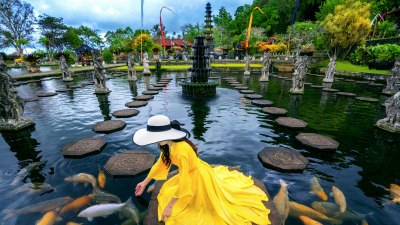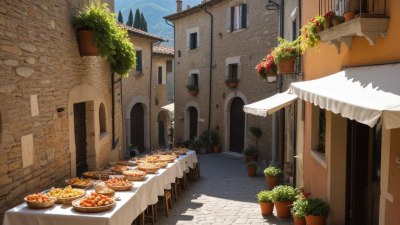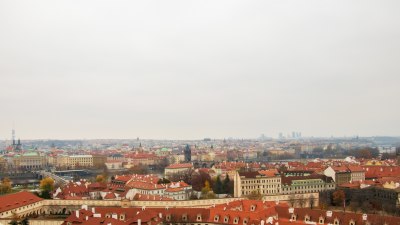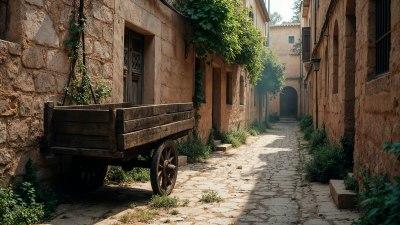The Dirt Here Knows You’re Temporary
Explore the transient nature of existence and the stories held within the earth.
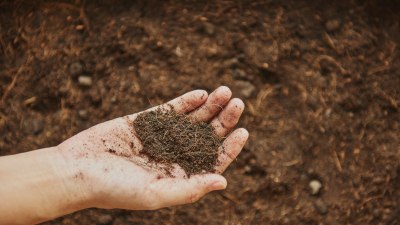
Image by rawpixel-com on Freepik
The concept of temporality is woven into the fabric of our existence. From the moment we are born, we are reminded of our fleeting nature. The dirt beneath our feet serves as a grounding reminder of this impermanence, encapsulating stories and lives that have come and gone. It gives life to the plants that will wither, the creatures that will pass, and even our own presence that is but a blip in the vast canvas of time.
The phrase 'The dirt here knows you’re temporary' speaks to a profound truth shared across cultures and generations. We often think of ourselves as permanent fixtures within our environments, but the earth knows otherwise. Each grain of soil is infused with the essence of those who have existed before us, their legacies intermingled with our own. In this way, we are not only temporary; we are part of a continuum.
Understanding Our Place in Nature
To understand our place in nature fully, we must look at the cycles of life that dominate the ecosystems around us. Trees begin as tiny seeds, germinating in the dirt, and grow into towering giants only to eventually decay and return to the soil, enriching it for new life. The dirt bears witness to these transformations, holding memories in layers, each filled with the remnants of life that has passed.
In our modern lives, we often lose sight of this connection to the earth. We surround ourselves with concrete and steel, constructing lives that feel permanent. Yet, if we return to the natural world, we can see how fragile our existence truly is. The dirt reminds us that while we may build monuments and leave marks on the ground, our time here is transient.
Lessons from the Land
Each region bears its own stories, and the dirt from different lands tells varied tales. In arid deserts, one can find ancient rocks, remnants of civilizations that have long vanished, illustrating the brutal yet beautiful cycle of life and death. In lush forests, the dirt bursts with vitality, teeming with microorganisms that bring life to trees and plants. These contrasts highlight the diverse conditions under which life struggles, thrives, and ultimately fades away.
These lessons from the land urge us to appreciate the temporary moments we have. Every sunset observed and every relationship nurtured adds depth to our existence. The dirt around us doesn't differentiate between a monumental achievement and a mundane everyday moment; they are all part of the rich tapestry of life.
The Cycle of Life and Death
Much of our discomfort with the idea of temporality stems from a fear of death. However, death is not the end but rather a transition. The dirt serves as a metaphor for this cycle, reinforcing the notion that every end is a precursor to a new beginning. When one life ends, it feeds another; the cycle continues generationally through the soil.
Consider composting as a poignant example of this idea. Organic waste is transformed into rich, nutritious dirt, which then produces new life—plants that yield fruits or flowers. Here, the dirt becomes not just a home for seeds but a testament to the unity of life and mortality. The ingredients of one life become the foundation of another's growth.
The Stories Beneath Our Feet
As we traverse different landscapes, we may step unknowingly upon histories that predate our existence. Archaeological sites reveal artifacts that narrate tales of lives once lived. They illustrate that human beings have always grappled with the inevitability of death and the passing of time. The dirt hiding these treasures has absorbed every whisper of joy, sorrow, and struggle.
We often fail to acknowledge that we are but visitors in spaces that hold the essence of what was, what is, and what will be. Each footprint we leave is fleeting, yet it contributes to a larger legacy. The earth doesn't mourn our brief visits, nor does it lament human arrogance; instead, it continues its dance, a rhythm of life that persists beyond individual stories.
Embracing Impermanence
How, then, can we embrace this impermanence? First, by recognizing the inherent beauty in transience. Blossoms bloom vibrantly but fade swiftly, yet during their brief lives, they offer beauty and joy. This can serve as an allegory for our relationships, experiences, and moments—each holds a beauty that deserves recognition, regardless of its duration.
We can also cultivate gratitude for our existence. Rather than focusing on what we lack, we should appreciate our unique experiences, connections, and the simple act of being alive. The dirt reminds us that every experience is a fleeting gift and should be cherished.
The Future Within the Past
Looking to the future, it's essential to acknowledge our role as stewards of the earth. Each generation leaves an imprint on the dirt, and our actions today will shape the experiences of those who come after us. We must strive to leave the earth in a better state, not just for our descendants but for the continuation of life itself.
Our approach to consumption, land use, and interaction with nature will determine the narratives that future generations tell about us. Will they view us as caretakers or destroyers? Every decision we make echoes through time, carving a path either toward sustainability or depletion.
The Legacy We Leave
Ultimately, the essence of the dirt here knowing we’re temporary lies in our acknowledgment of mortality, connection, and legacy. It beckons us to live fully, to be mindful, and to engage with the world around us, both for ourselves and for those who will traverse the same ground in the future. By understanding our temporality, we can foster deeper connections and appreciate both the struggles and the joys of existence.
As we interact with the dirt beneath us, let us remember that while we may be temporary, the stories we create and the lives we touch contribute to a larger narrative woven into the earth itself. This interconnected web of life binds us, transcending time and inviting us to embrace every moment. The dirt knows we’re temporary, but it also knows the footprints we leave behind are indelible.






